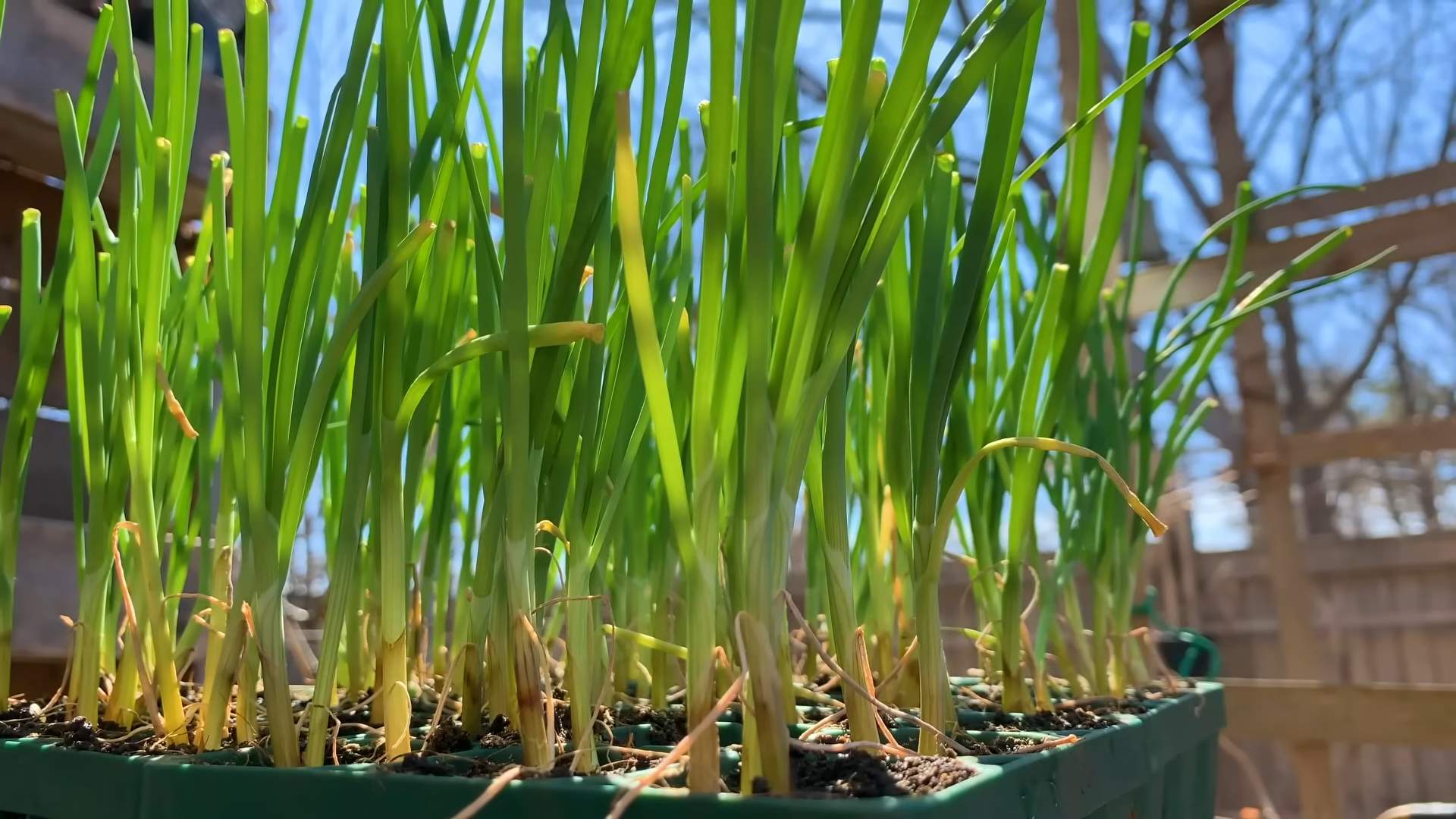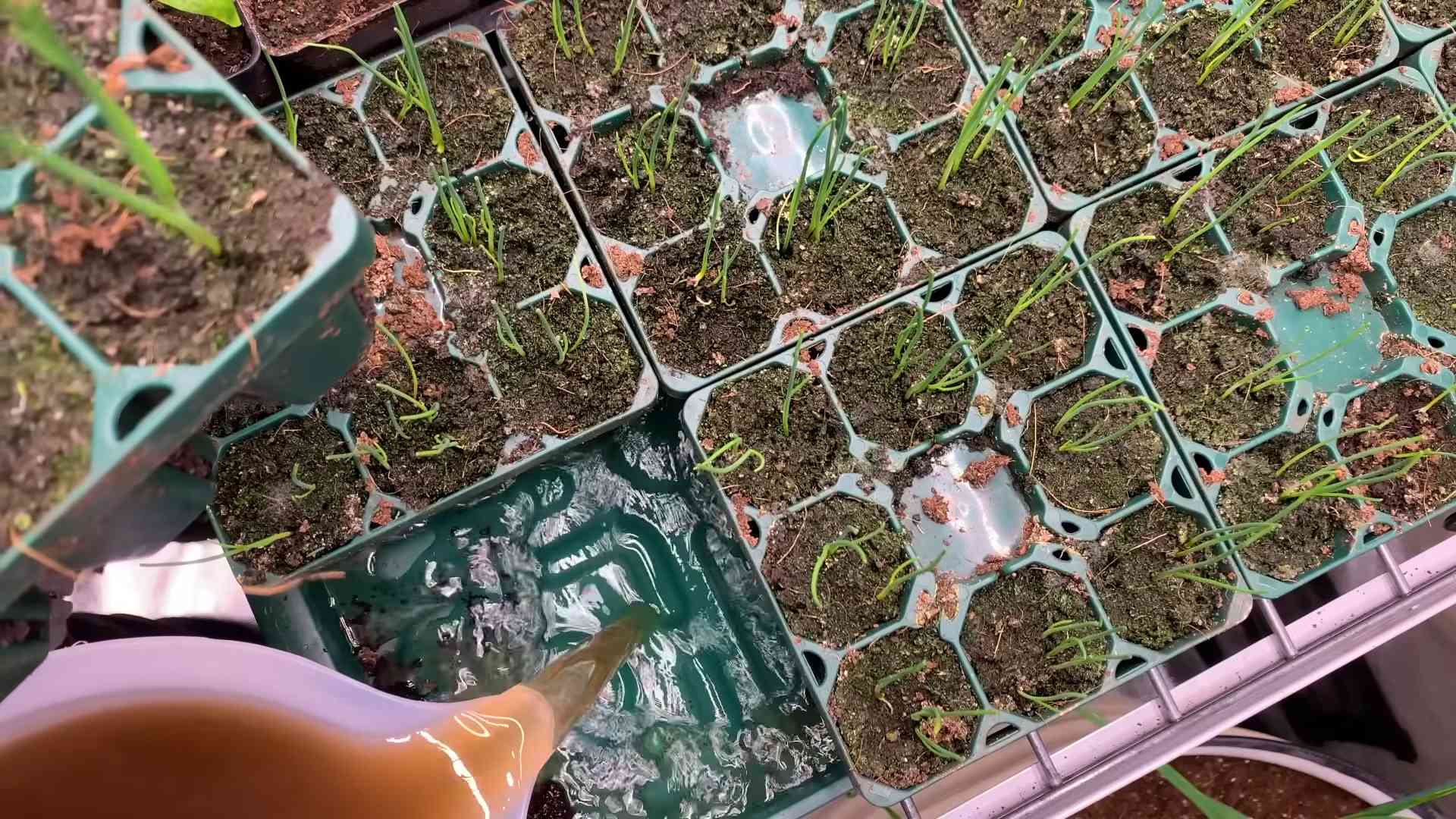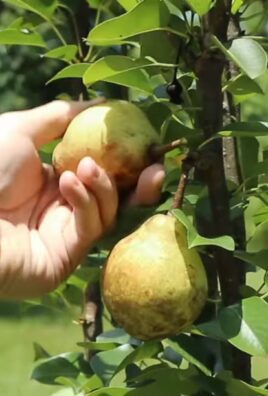Regrow Green Onions: Tired of constantly buying green onions only to use a small portion and watch the rest wilt away in your fridge? I know the feeling! It’s frustrating, wasteful, and frankly, a little annoying. But what if I told you there’s a super simple, practically free way to have a constant supply of fresh green onions right at your fingertips?
The practice of propagating vegetables isn’t new. For centuries, resourceful gardeners around the world have found ways to extend their harvests and minimize waste. Think of it as a tiny act of rebellion against grocery store prices and food waste! It’s a tradition rooted in sustainability and a deep connection to the earth.
In today’s fast-paced world, where convenience often trumps sustainability, learning to regrow green onions (and other vegetables!) is more important than ever. Not only does it save you money, but it also reduces your environmental footprint and gives you a sense of accomplishment. Plus, it’s incredibly easy! This DIY trick is perfect for beginner gardeners, apartment dwellers, or anyone who wants to add a touch of green to their kitchen. I’m going to show you exactly how to do it, step-by-step, so you can enjoy fresh, flavorful green onions whenever you need them. Get ready to ditch those sad, wilted bunches and embrace the joy of homegrown goodness!

Regrowing Green Onions: A Simple DIY Guide
Hey there, fellow green thumb enthusiasts! Ever find yourself tossing the root ends of your green onions after using the leafy tops? Well, stop right there! I’m going to show you how to easily regrow those little guys and have a continuous supply of fresh green onions right at your fingertips. It’s super simple, cost-effective, and incredibly satisfying. Trust me, once you start, you’ll never look at a green onion the same way again.
What You’ll Need
Before we dive in, let’s gather our supplies. The beauty of this project is that you probably already have most of these things lying around:
* Green onions (with roots attached, of course!)
* A small glass or jar
* Water
* Scissors or a sharp knife
* Potting soil (optional, for long-term growth)
* A small pot or container (optional, for long-term growth)
The Water Propagation Method: Quick and Easy
This is the easiest and fastest way to regrow your green onions. It’s perfect for getting a quick harvest and seeing results almost immediately.
1. Prepare the Green Onions: Using your scissors or knife, trim the green onions, leaving about 1-2 inches of the white root end intact. Don’t throw away the green parts you cut off! Use them in your cooking. This is all about minimizing waste, remember?
2. Place in Water: Fill your glass or jar with enough water to cover the roots, but not so much that it submerges the entire white part of the onion. You want the very top of the white part to be exposed to air.
3. Find a Sunny Spot: Place the glass or jar on a windowsill or any area that receives plenty of sunlight. Sunlight is crucial for photosynthesis and healthy growth.
4. Change the Water Regularly: This is important! Change the water every 1-2 days to prevent bacteria growth and keep the water fresh. Stagnant water can lead to rot.
5. Watch Them Grow!: Within a few days, you’ll start to see new green shoots emerging from the top. It’s like magic!
6. Harvest and Repeat: Once the green shoots have grown to a usable length (usually a few inches), you can harvest them by snipping them off with scissors. Leave about an inch or two of the green growth so they can continue to regrow. And guess what? You can repeat this process multiple times!
The Soil Planting Method: For Long-Term Growth
While the water propagation method is great for a quick harvest, planting your green onions in soil will allow them to grow larger and potentially even multiply.
1. Prepare the Green Onions: Just like with the water method, trim the green onions, leaving about 1-2 inches of the white root end intact.
2. Choose Your Pot: Select a small pot or container with drainage holes. Drainage is essential to prevent root rot.
3. Fill with Potting Soil: Fill the pot with good quality potting soil, leaving about an inch of space at the top.
4. Plant the Green Onions: Make a small hole in the soil and plant the green onion root end, burying the white part up to where the green part starts. Gently pat the soil around the base of the onion to secure it.
5. Water Thoroughly: Water the soil thoroughly until water drains out of the drainage holes.
6. Find a Sunny Spot: Place the pot in a sunny location. Green onions thrive in sunlight.
7. Water Regularly: Keep the soil consistently moist, but not soggy. Water when the top inch of soil feels dry to the touch.
8. Fertilize (Optional): To encourage even more growth, you can fertilize your green onions every few weeks with a diluted liquid fertilizer.
9. Harvest and Enjoy: As the green onions grow, you can harvest them by snipping off the green shoots as needed. You can also dig up the entire plant and separate the bulbs to replant them, effectively multiplying your green onion supply!
Troubleshooting Tips
Even with the best intentions, sometimes things don’t go exactly as planned. Here are a few common issues you might encounter and how to fix them:
* Yellowing Leaves: This could be a sign of overwatering or underwatering. Make sure the soil is moist but not soggy. If you’re using the water propagation method, make sure you’re changing the water regularly. Also, ensure they are getting enough sunlight.
* Rotting Roots: This is usually caused by stagnant water or poor drainage. Change the water more frequently in the water propagation method. If you’re planting in soil, make sure your pot has drainage holes and that you’re not overwatering.
* Slow Growth: This could be due to lack of sunlight or nutrients. Move your green onions to a sunnier location and consider fertilizing them if you’re planting in soil.
* Pests: While green onions are relatively pest-resistant, they can sometimes attract aphids. If you notice aphids, you can try spraying them with a mixture of water and dish soap.
Why This Works: The Science Behind the Magic
You might be wondering how this is even possible. Well, green onions, like many plants, have the ability to regenerate from their root ends. The roots contain stored energy and the necessary genetic information to produce new growth. By providing them with water and sunlight, you’re essentially giving them the resources they need to kickstart that regeneration process. It’s a pretty amazing example of nature’s resilience!
Beyond the Basics: Advanced Green Onion Growing
Want to take your green onion growing to the next level? Here are a few ideas:
* Experiment with Different Varieties: There are many different varieties of green onions, each with its own unique flavor and characteristics. Try growing a few different varieties to see which ones you like best.
* Succession Planting: To ensure a continuous supply of green onions, plant new batches every few weeks. This way, you’ll always have fresh green onions ready to harvest.
* Grow Indoors Year-Round: With the right conditions, you can grow green onions indoors year-round. This is a great option if you live in a climate with harsh winters.
* Use Hydroponics: For a more advanced approach, you can try growing green onions hydroponically. This involves growing them in water without soil, using a nutrient-rich solution.
Final Thoughts
Regrowing green onions is a fun, easy, and rewarding DIY project that anyone can do. It’s a great way to reduce food waste, save money, and enjoy fresh, homegrown produce. So, next time you’re about to toss those green onion root ends, remember this guide and give them a new lease on life! Happy growing!

Conclusion
So, there you have it! Regrowing green onions from scraps isn’t just a clever kitchen hack; it’s a sustainable, cost-effective, and surprisingly rewarding way to add fresh flavor to your meals. Forget constantly buying bunches that wilt away in your crisper drawer. With this simple DIY trick, you can have a continuous supply of vibrant green onions right at your fingertips.
Why is this a must-try? Because it’s incredibly easy. Seriously, if you can put a green onion in water, you can do this. It requires minimal effort, no special equipment, and transforms kitchen waste into a valuable resource. Think of the money you’ll save on groceries! And beyond the financial benefits, you’re reducing food waste and taking a small step towards a more eco-friendly lifestyle. That’s a win-win in our book.
But the beauty of this method lies in its adaptability. While water propagation is the simplest approach, you can also experiment with planting your regrown green onions directly into soil. This can lead to even more robust growth and a longer lifespan for your plants. Consider using a well-draining potting mix and placing them in a sunny spot. You can even try different containers, from small pots to larger raised beds, depending on your available space and desired yield.
Another fun variation is to try regrowing other members of the allium family, like scallions or leeks. The process is essentially the same, and you might be surprised at the results. Imagine having a miniature herb garden right on your windowsill, providing you with fresh ingredients for all your culinary creations.
We’ve shown you the basics, now it’s your turn to get your hands dirty (or, in this case, wet!). We wholeheartedly encourage you to try this simple yet effective DIY trick. Start with a single bunch of green onions and see how quickly you can establish your own self-sustaining supply.
Don’t be afraid to experiment with different methods, locations, and containers to find what works best for you. And most importantly, don’t forget to share your experiences! We’d love to hear about your successes, challenges, and any unique variations you discover along the way. Share your photos and stories on social media using #RegrowGreenOnions and let’s inspire others to embrace this fantastic kitchen hack. Let’s all enjoy the fresh, flavorful benefits of regrowing green onions!
Frequently Asked Questions (FAQ)
How long does it take for green onions to regrow?
Generally, you’ll start to see noticeable regrowth within a few days, typically 3-5 days. The speed of growth depends on factors like the temperature, sunlight, and the initial health of the green onion scraps. You can expect to harvest usable green onions within a week or two. Remember to change the water every 1-2 days to keep the environment fresh and prevent bacterial growth.
Can I regrow green onions indefinitely?
While you can regrow green onions multiple times from the same base, the regrowth will eventually slow down and the flavor may become less intense. After several cycles (typically 3-4), it’s best to start with fresh green onions for optimal results. However, planting the regrown base in soil can extend its lifespan significantly.
What’s the best way to regrow green onions in water versus soil?
Regrowing in water is the simplest method. Just place the white bulb end with roots (or the very bottom if roots are gone) in a glass or jar with enough water to cover the roots. Change the water regularly. For soil, plant the bulb end in well-draining potting mix, leaving the green shoots exposed. Water regularly, keeping the soil moist but not waterlogged. Soil-grown green onions tend to be more robust and flavorful in the long run.
What kind of water should I use?
Tap water is generally fine, but if your tap water is heavily chlorinated, it’s best to let it sit out for 24 hours before using it to allow the chlorine to dissipate. Filtered water is also a good option. Avoid using distilled water, as it lacks the minerals that plants need to thrive.
How much sunlight do regrowing green onions need?
Green onions thrive in bright, indirect sunlight. A windowsill that receives morning sun is ideal. Avoid placing them in direct, intense sunlight, which can scorch the leaves. If you don’t have a sunny windowsill, you can use a grow light to supplement their light needs.
My green onions are turning yellow or brown. What’s wrong?
Yellowing or browning leaves can indicate a few things. It could be due to overwatering (if grown in soil), underwatering, lack of nutrients, or poor water quality. Ensure the soil is well-draining and not constantly soggy. Change the water regularly if growing in water. Consider adding a diluted liquid fertilizer to the water or soil every few weeks to provide essential nutrients. Also, make sure they are getting enough light.
Can I use any type of container to regrow green onions?
Yes, you can use almost any type of container, as long as it can hold water or soil and provide adequate drainage (if using soil). Glass jars, plastic cups, small pots, and even repurposed containers like yogurt containers are all suitable options. Just make sure the container is clean to prevent bacterial growth.
How do I harvest the regrown green onions?
Simply snip off the green shoots with scissors as needed, leaving about an inch or two of the base intact to allow for further regrowth. Avoid cutting too close to the base, as this can damage the plant.
Can I regrow green onions indoors year-round?
Yes, you can regrow green onions indoors year-round, regardless of the weather outside. Just provide them with adequate light, water, and nutrients, and they will continue to grow.
What if my green onions don’t have roots?
Even without roots, green onions can still regrow. The white bulb end contains enough stored energy to initiate new root growth. Just place the bulb end in water as described above, and new roots should emerge within a few days.
Is it safe to eat regrown green onions?
Yes, regrown green onions are perfectly safe to eat, as long as they are grown in a clean environment and free from pests or diseases. Wash them thoroughly before using them in your cooking.
Can I freeze regrown green onions?
Yes, you can freeze regrown green onions to preserve them for later use. Chop them into small pieces and spread them out on a baking sheet lined with parchment paper. Freeze for a few hours, then transfer them to a freezer bag or container. They can be stored in the freezer for several months.
What are some creative ways to use regrown green onions?
Regrown green onions can be used in any recipe that calls for green onions. Add them to salads, soups, stir-fries, omelets, dips, and sauces. They can also be used as a garnish for tacos, nachos, and other dishes. Get creative and experiment with different ways to incorporate them into your cooking.





Leave a Comment